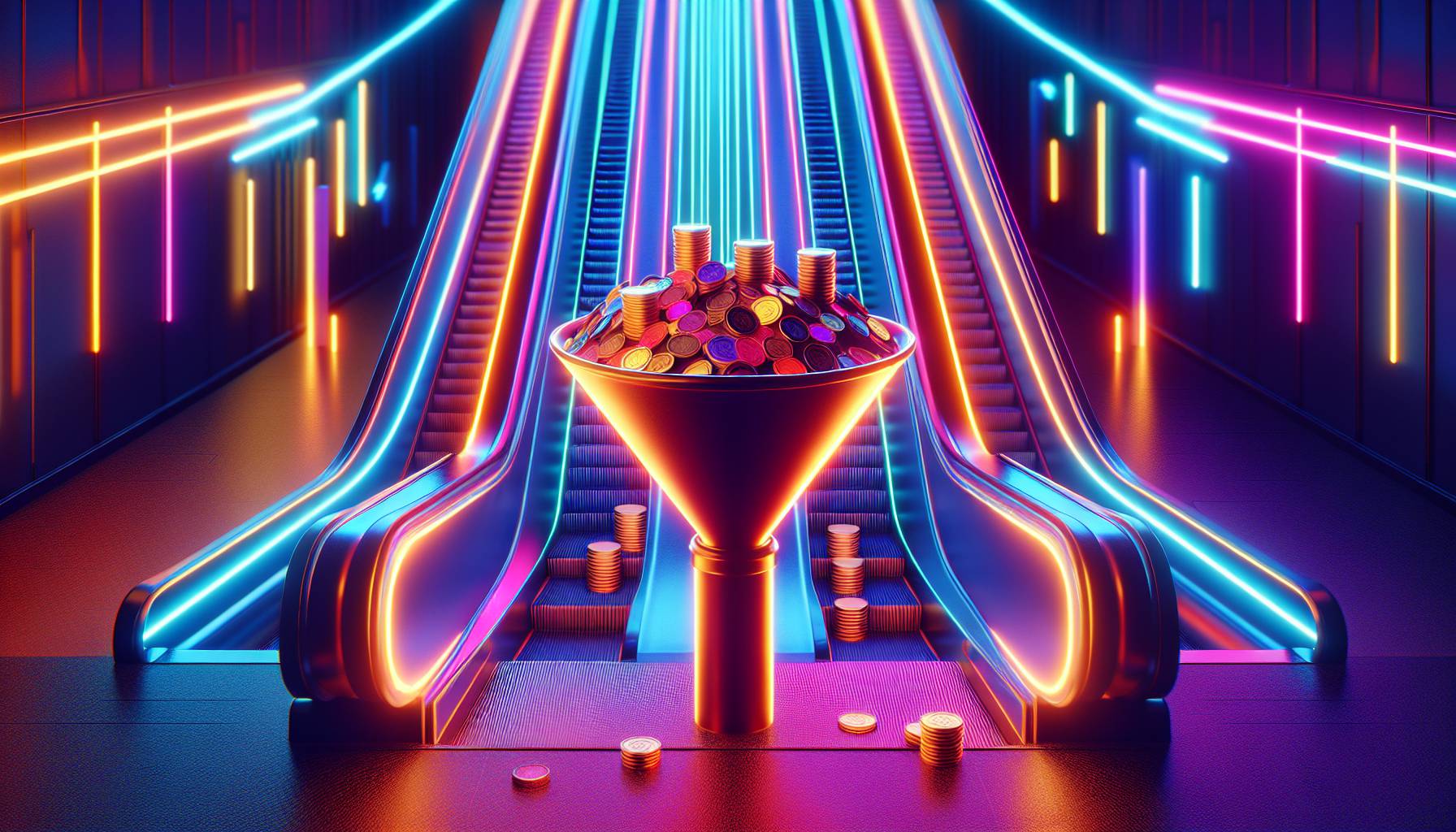Understanding Average Order Value (AOV)

It’s easy to think that getting customers through the door is enough to keep your fashion business going. But an endless stream of new shoppers doesn’t guarantee a healthy profit if each person leaves your online store with only one or two items in their cart.
That’s where Average Order Value (AOV) becomes more important than all that talk about traffic and conversions. AOV is what you get when you take the total revenue and divide it by the number of orders. Not exactly dinner conversation, but worth a look if you want to grow your profits without investing more into sales and marketing.
It can also help you identify gaps in your pricing, product mix, and even website user experience. If shoppers are only buying one item at a time, it might make sense to explore tactics like bundling or cross-selling to encourage them to add on more items and increase your average order value. There are a handful of ways to calculate AOV for specific periods (monthly, yearly, or even daily) depending on how much data you want to analyse.
But generally, the higher your average order value, the better for business overall. Increasing AOV is often regarded as an effective way for fashion businesses to squeeze out more profit from each order as it means they’re selling more per transaction, and making enough money per customer without paying extra acquisition costs. When it comes to finding ways to boost AOV, upselling or persuading customers to upgrade by adding on products are highly profitable sales tactics because they can be easily automated through artificial intelligence (AI)-powered chatbots on e-commerce websites or even with pop-up recommendations in checkout windows or product detail pages. That said - there’s always room for well-trained retail staff who can use some of these tactics in-store too.
The Psychology Behind Upselling

The way I see it, appears to be upselling is not a dirty word. It's everywhere, and it's been around for centuries. You might have experienced it when the restaurant waiter offered you grilled veggies on the side, or the salesgirl at the department store suggested a new shade of lipstick to complement your skin tone. More or less.
The question is, why do these techniques work. In a nutshell, people love upgrades. They are usually prone to picking the most expensive and attractive option because it makes them feel special. Think about it - have you ever gone on holiday and felt compelled to pick the 'best' room on the block even though you won't be spending much time in it.
Businesses often use this natural inclination to their advantage when trying to upsell their products. Sometimes, consumers don't even realise that they're being upsold. Another area where this psychological hack works is in creating a sense of urgency amongst shoppers. Brands tell you there are only three pieces left and what do you do.
If you're like me, you'd hit 'add to cart' almost impulsively. There's an evolutionary explanation behind this. People often flock towards limited-edition items with an expiry date attached to them because they tell themselves that it's now or never. One thing I've realised is that trust is at the heart of upselling and cross-selling tactics.
If people don't trust a brand, they're going to spend less time and money (often) in its stores or on its website. But if they like what they're seeing after being exposed to something new (a product, service, accessory), it's easier for them to spend more money on it as an upgrade instead of turning their backs entirely.
Effective Product Bundling Strategies

People can’t seem to stop talking about product bundling. I mean, a gift set with hand cream, shower gel, and a matching scented candle will always make sense, right. But it goes so much deeper than that.
There’s an art to bundling - one that will see you boost your AOV without adding to your customers’ decision fatigue. When you combine similar products and offer them at a slightly lower price point, your average spend goes up without your customer even realising it. More often than not, they may have come in looking for just the single item and come away with two or three more thanks to an irresistible offer. Sometimes people are looking for more value or are seeking to try new products without the risk of overspending.
A well-crafted bundle meets both those needs and has a two-fold impact. Your sales go up and they are left feeling good about their purchase. Some people like bundles because they can presumably use them as gifts for someone special or themselves. It’s important to be strategic about the bundles you put together so your sales efforts are not wasted.
The way I see it, a bundle is an effective way to cross-sell, especially when you put together a kit with matching products that complement each other. For example, if you sell a high-end razor blade, you could bundle in shaving gel and aftershave lotion as well as extra replacement blades at a lower price point than if they were bought separately. But sometimes it’s not all as simple as it seems. The way I see it, if the price difference between the bundle and individual items is too little, customers may feel tricked or cheated out of their hard-earned cash which could reflect poorly on your brand reputation and cause you to lose trust with them.
The way I see it, people love bundles, but only when they feel like it is worth their time and money. It’s not just what you sell but how you sell it that matters.
Leveraging Scarcity and Urgency

There’s something about a count-down clock or a blinking “only 3 left. ” banner that sends our lizard brains into overdrive. Scarcity and urgency are among the oldest tricks in retail’s playbook for moving stock, both online and off.
They’re usually straight shooters: limited-time offers nudge us to act, fast, and low-inventory notices make us fret that the size-10 trench might slip away from our shopping bag forever. No matter how smart we think we are, scarcity and urgency often work. In ecommerce especially, shoppers have a million tabs open and even more distractions vying for their attention, so anything that makes us pause for even a second - like an out-of-stock warning or a time-bound flash sale - brings some much-needed focus to the buying process.
And unlike other upselling tactics that may add value but don’t drive action, scarcity and urgency actually help convert fence-sitters. But there are caveats. Too many pop-ups (especially in a short time frame) can cause fatigue, as can perpetual sales banners that advertise the same discount week after week.
As with most things in ecommerce, there’s a fine line between motivating shoppers and overwhelming them. It’s why some brands find more success with subtlety and restraint over glaring urgency cues. Sure, “sale ends in 30 seconds” can turn browsers into buyers if they’re already primed for it - but it can also be spammy enough to make them bounce before they finish adding items to cart.
Here’s what seems like a good rule of thumb: always back your claims up with proof. If something is on sale for only four more hours, ensure that your systems automatically revert its price once the timer runs out. If an item is running low on stock, update your inventory daily so you’re not scaring anyone with fake alerts about products that aren’t flying off your (virtual) shelves. And while you could stick with digital reminders alone, scarcity is all about context - try pairing them with strong social proof like testimonials or reviews from verified buyers to offset any doubt shoppers might have about whether you’re just trying to hustle them along.
Personalization Techniques for Upselling

It seems like we’re all after that feeling of being seen, doesn’t it. Even when shopping. From the barista who remembers our coffee order to the handy push notification that recommends you buy a charger along with your new laptop - being recognised feels nice, and more brands are leaning into these personalisation techniques now, more than ever before. Whether it’s the emails landing in our inbox or the chatbot on a website we’ve revisited for the third time in a week; getting personal is key to boosting your average order value.
And it is definitely about more than recommending add-on products. Sort of. Or bombarding customers with emails using their first name and zeroing in on their pain points. It's about getting it right - making one-of-a-kind experiences for each shopper using customer data.
This could mean anything from showing curated product lists and offering discounts through retargeting to upselling based on customer behaviour (say, giving extra credit on a gift card if they top-up online). AI-powered recommendations are helpful to anticipate what shoppers want to buy next, while limited-time offers encourage bigger spends. Merging tried-and-tested techniques with these new ones can do wonders for your AOV.
But I think timely engagement and contextual communication is sometimes overlooked but vital for upselling today. Consider this: even if your customer did make an impulsive extra purchase, there’s a high chance they’ll end up returning that item because it didn’t fit their wardrobe (or life) needs. Rather than fill up people’s carts indiscriminately, using personalisation means you only recommend what will actually be bought - reducing return rates while increasing average spend.
Salespeople have been doing this forever by tailoring conversations based on customers’ body language, hesitations and responses to gentle nudges. Personalisation just lets you do it digitally which is rather efficient if you ask me.
Measuring the Success of Your Upselling Tactics

Here’s something to chew on - fashion e-commerce leaders often make grand claims about their upselling tactics and the effectiveness of their campaigns. And while that is all well and good, you can’t really know how successful a tactic is unless you measure it using the right metrics. It would be easy to look at vanity metrics like sales or your Average Order Value - but those numbers don’t really tell you anything useful, do they. If you are running an upsell campaign or have employed a new sales tactic, and you want to know if it’s worth sticking with, use these metrics instead.
Conversion rate is a good place to start - it will show you the number of people who saw your offer versus those who acted on it. But that won’t give you much insight into why someone ignored your offer or why someone else went with it. For that, customer feedback is necessary. Reviews and testimonials will help you gain a deeper understanding of what customers like and dislike about your upsell offers so that you can optimise them further.
The way I see it, but don’t just stop there - customer engagement is another thing to keep an eye out for. If consumers are spending more time on your site or coming back often, that could mean that they are exploring upsell offers or considering them. There’s no way around this; even if an upsell campaign doesn’t meet your expectations in terms of revenue growth, it could still be considered a success if it increased customer retention rates or improved loyalty.
So, remember to keep your goals in mind before deciding if something failed or succeeded - not every effort needs to result in a sale right away; sometimes slow and steady wins the race too.


